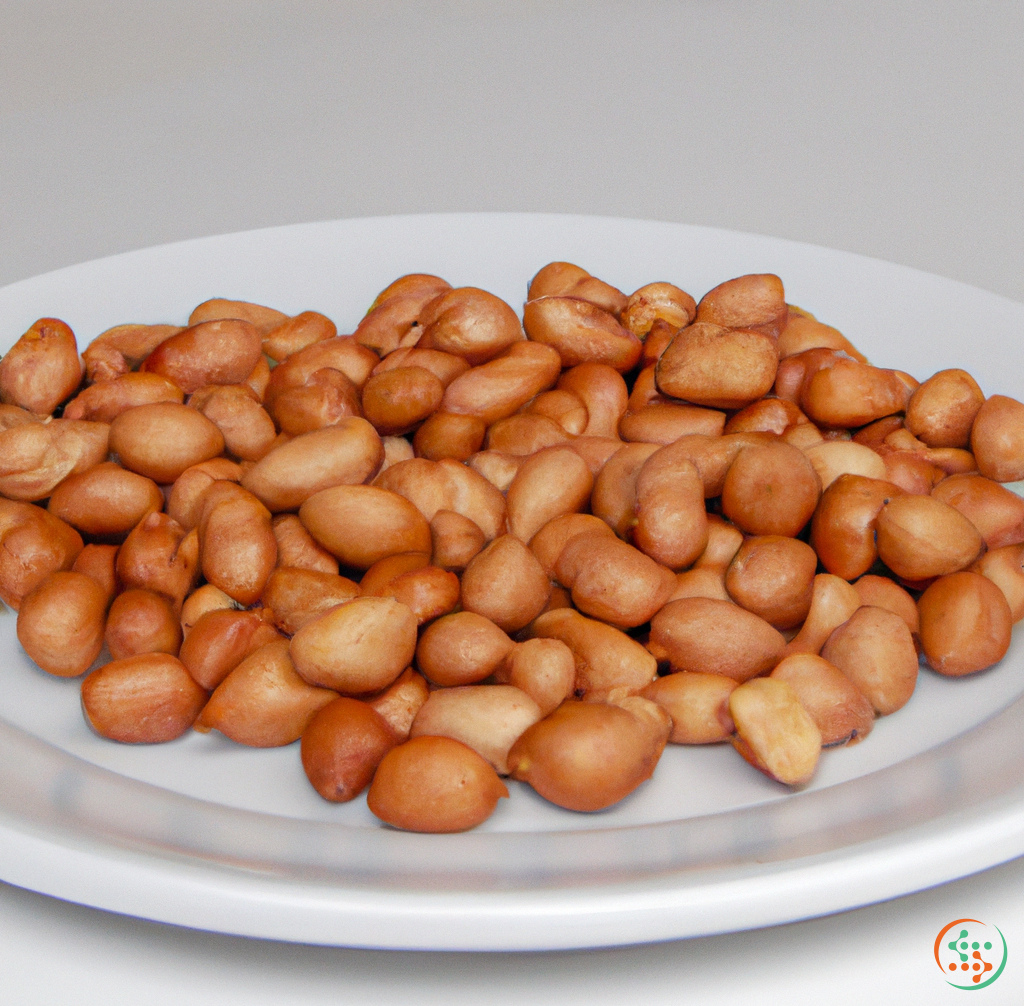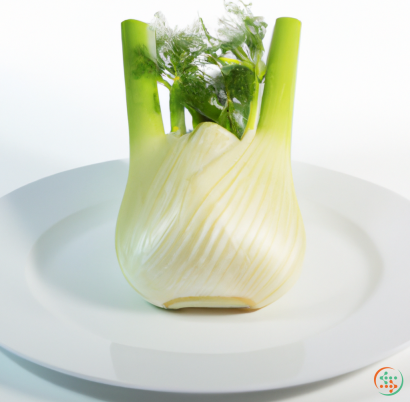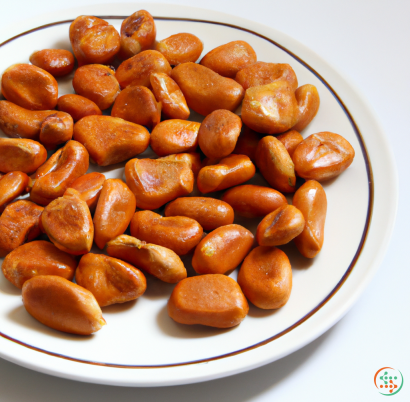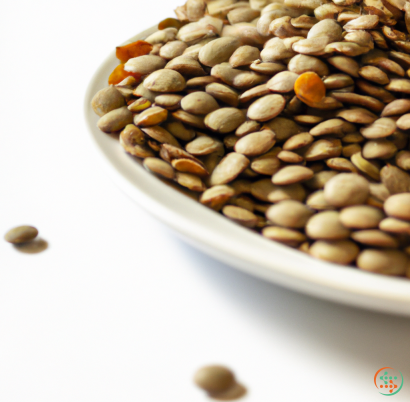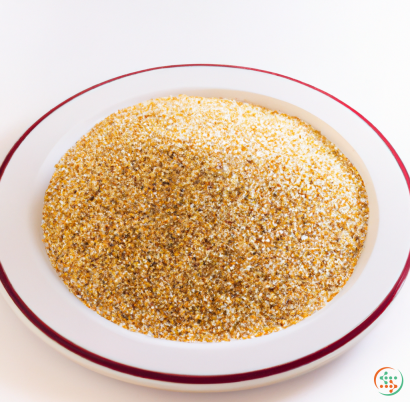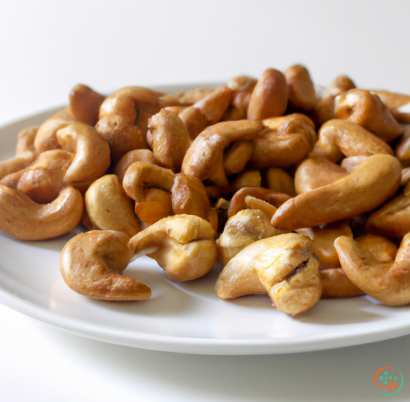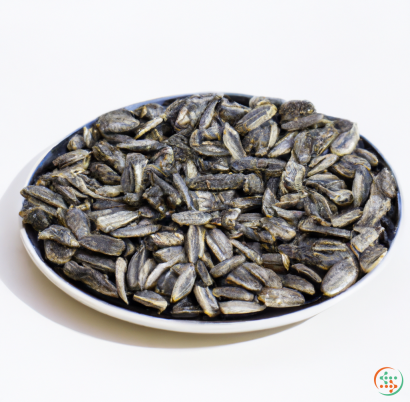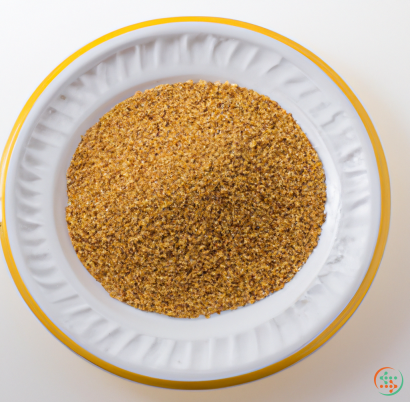Roasted Peanuts
Peanuts, otherwise known as goobers, are a type of nut native to South America that is packed with nutrition such as fiber, protein, and healthy unsaturated fats. Despite being high in calories, peanuts are an incredibly nutrient-dense food, providing numerous benefits for both health and pleasure. “Roasted peanuts” are peanuts that have been cooked—either hot-air roasted, oiled, or boiled—in order to enhance the flavor and texture of the nut. Let’s take a closer look at what roasted peanuts are, the different methods of roasting, and the advantages of roasted peanuts.
What Are Roasted Peanuts?
Roasted peanuts are peanuts that have been cooked in a way that changes their texture and flavor. These peanuts can be cooked by a variety of methods, including hot-air roasting, oil roasting and boiling. Different techniques are used for different effects. For example, hot air roasting produces a dry, crisp texture and a light golden color. Oil roasting adds depth to the flavor, while boiling helps soften the nuts and eliminates the need for added salt or sugar.
Hot-air Roasted Peanuts
Hot-air roasting is the most common method of roasting peanuts. This method uses a convection oven or a roasting machine to roast the peanuts by circulating hot air over them. The temperatures usually range from 140°F to 180°F and the roasting time varies depending on the size of the nut. Hot-air roasted peanuts tend to have a dry, crunchy texture and a golden color.
Oil Roasted Peanuts
Oil roasting, also known as dry roasting, involves coating the peanuts with a neutral-flavor oil before cooking them in an oven or a larger roasting machine. This type of roasting can bring out even more flavor and aroma, making them much tastier. The process typically requires more oil than hot-air roasting and the peanuts may be cooked at slightly higher temperatures—usually 240°F to 270°F—and for a slightly longer amount of time.
Boiled Peanuts
Boiling peanuts is another popular method of roasting that produces soft, almost-mushy peanuts. This method is popular in the Southern regions of the United States as well as in Asia. The boiling process involves covering raw peanuts in water, adding salt, and then cooking them until they’re tender. This method is often used for making snack mixes and other dishes that may call for softer nuts.
Advantages of Roasted Peanuts
There are numerous advantages to roasting peanuts. First of all, peanuts that have been roasted are generally more flavorful. This is due to the Maillard reaction, which occurs when heat is applied to certain foods—the sugars and amino acids in the peanut are "cooked," resulting in a more complex flavor. Roasting also improves the texture of peanuts, resulting in a crunchier, more enjoyable nut. Additionally, roasted peanuts are easier to eat because the roasting process helps loosen and break apart the skins.
Finally, roasting the peanuts helps to preserve them longer, as the heat helps kill any bacteria that may be present. This extends the shelf life of the nut, allowing people to keep them around longer without having to worry about spoilage.
In conclusion, roasted peanuts are a delicious and nutritious snack. Roasting these peanuts improves the flavor, texture, and aroma, and also helps to preserve them for a longer shelf life. Hot-air roasting, oil roasting, and boiling are all popular methods of roasting that can help customize the flavor and texture of the nuts. All three methods help to enhance the nutritional value of the peanuts and provide numerous advantages for enjoyment and health. If you’re looking for a tasty snack or want to get a remarkable boost of nutrients in your diet, look no further than roasted peanuts.
The journey of a roasted peanut from farmer to diner is a complex and fascinating process. The journey begins on the farmer's field and concludes, sometimes hours later, when a fresh plate of perfectly roasted peanuts is placed on the diner's plate. To better understand this process, let's take a step-by-step look at how a roasted peanut moves from the field to the dinner plate.
From the Field
Before anything else, the peanuts first need to be grown. The majority of the world’s peanuts are grown in the United States with around 85% of the crop coming from just four states – Georgia, Texas, Alabama and Florida. To begin the peanut-growing process, farmers prepare the land by tilling and fertilizing their soil. They then plant the seeds, which can either be planted by hand or with a planter, and the farmers must wait several weeks until the peanut plants are ready to be harvested.
When harvesting is complete, the farmers must separate the peanuts from the chopped vines and other debris. This is typically done with a combine, which combines the step of harvesting with the step of removing the peanuts from the vines. Once the peanuts are harvested, they are collected and loaded into baskets, bags, or crates for transport.
To Market
After the peanuts are harvested, they need to be transported to their next destination. Currently, a majority of the peanuts grown in the United States are processed and packaged into the large 23-pound cans that are found in many grocery stores. To get to these cans, though, the fresh peanuts must first be taken to a processor for cleaning, sorting, and packaging. During this stage, the peanuts are carefully examined for any signs of pests, rodent droppings, and other imperfections that could make them unsafe. The processors then wash and sort the peanuts and package them into the large cans before they are ready to go to market.
Once the peanuts have been packaged, they will typically be stored in a large warehouse or shipping center. From here, they are loaded onto trucks or trains and transported to their destination. Depending on the size of the shipment, the peanuts can make their journey by land or by sea. If they are shipped overseas, they may make the journey by ship, plane, or train.
Once the cans of peanuts arrive at their destination, they are unloaded from the truck and moved to a storage facility or store. Here, the peanuts are stored until they are ready to be sold.
To Roasting
When the cans of peanuts are sold, they are typically moved to a roasting facility. Here, the peanuts are inspected again before they are roasted. The process of roasting is done in large roasters where the peanuts are heated at a high temperature for a certain amount of time. During the roasting process, the peanuts are stirred constantly in order to ensure an even distribution of heat. This process can take anywhere from 7 to 10 minutes, depending on the size and type of the peanuts being roasted.
Once the peanuts are perfectly roasted, they are cooled and ready for packaging. During this stage, the peanuts are placed in airtight containers to ensure a longer shelf life. The packaging also ensures that the peanuts retain their flavor, crunch, and texture long after they’ve left the roaster.
To Your Plate
Once the peanuts are packaged, they are sent to various markets across the world. Here, customers will purchase the roasted peanuts and take them home for consumption.
When the peanuts arrive on the diner’s plate, the journey of the roasted peanut is complete. The peanuts have been grown, harvested, transported, inspected, roasted, packaged, shipped, and sold before they ever get to the diner's plate. Whether they are enjoyed with dinner, as a snack, or used to make homemade peanut butter, the journey of roasted peanuts is a long and complicated one that is worth exploring.
The journey of a roasted peanut from farmer to diner is filled with complexity, but it is also an incredibly interesting process. From the moment the peanuts are planted in the farmer's field, to the moment they land on your plate, the peanuts undergo a great deal of effort and care. Hopefully, this blog post has given you a better understanding of how this tasty snack gets to your plate each and every day.
| Vitamin E | 0.00493 grams | |
| Vitamin B1 | 0.15 mg | |
| Vitamin B2 | 0.2 mg | |
| Vitamin B3 | 0.01436 grams | |
| Vitamin B4 | 0.0646 grams | |
| Vitamin B5 | 0.00101 grams | |
| Vitamin B6 | 0.47 mg | |
| Vitamin B9 | 0.097 mg |
| Calcium | 0.058 grams |
Daily Value 1.3 g
|
| Iron | 0.00158 grams |
Daily Value 0.018 g
|
| Magnesium | 0.178 grams |
Daily Value 0.4 g
|
| Phosphorus | 0.363 grams |
Daily Value 1.25 g
|
| Potassium | 0.634 grams |
Daily Value 4.7 g
|
| Sodium | 0.006 grams |
Daily Value 2.3 g
|
| Zinc | 0.00277 grams |
Daily Value 0.011 g
|
| Copper | 0.43 mg |
Daily Value 0.9 mg
|
| Manganese | 0.00179 grams |
Daily Value 0.0023 g
|
| Selenium | 0.0093 mg |
Daily Value 0.055 mg
|
| Tryptophan | 0.23 grams | |
| Threonine | 0.811 grams | |
| Isoleucine | 0.833 grams | |
| Leucine | 1.535 grams | |
| Lysine | 0.85 grams | |
| Methionine | 0.291 grams | |
| Cystine | 0.304 grams | |
| Phenylalanine | 1.227 grams | |
| Tyrosine | 0.963 grams | |
| Valine | 0.993 grams | |
| Arginine | 2.832 grams | |
| Histidine | 0.599 grams | |
| Alanine | 0.941 grams | |
| Aspartic Acid | 2.888 grams | |
| Glutamic Acid | 4.949 grams | |
| Glycine | 1.427 grams | |
| Proline | 1.045 grams | |
| Serine | 1.167 grams |
| Sucrose | 4.9 grams |
|
| Total Sugars | 0.131141 grams |
per 100g
|
| Myristic acid (14:0) | 0.02 grams |
|
| Palmitic acid (16:0) | 3.98 grams |
|
| Stearic acid (18:0) | 1.2 grams |
|
| Arachidic acid (20:0) | 0.58 grams |
|
| Behenic acid (22:0) | 1.22 grams |
|
| Lignoceric acid (24:0) | 0.69 grams |
|
| Total Saturated fatty acids: | 7.69 g | |
| Erucic acid (22:1) | 0.06 grams |
|
| Oleic acid (18:1) | 25.44 grams |
|
| Palmitoleic acid (16:1) | 0.03 grams |
|
| Gadoleic acid (20:1) | 0.63 grams |
|
| Total Monounsaturated fatty acids: | 26.16 g | |
| Omega-3 Alpha-linolenic acid (18:3) | 0.03 grams |
|
| Linolenic acid (18:3) | 0.03 grams |
|
| Linoleic acid (18:2) | 9.72 grams |
|
| Total Polyunsaturated fatty acids: | 9.78 g | |
| Trans-monoenoic fatty acids | 0.02 grams |
|
| Total Trans fat: | 0.02 g | |
